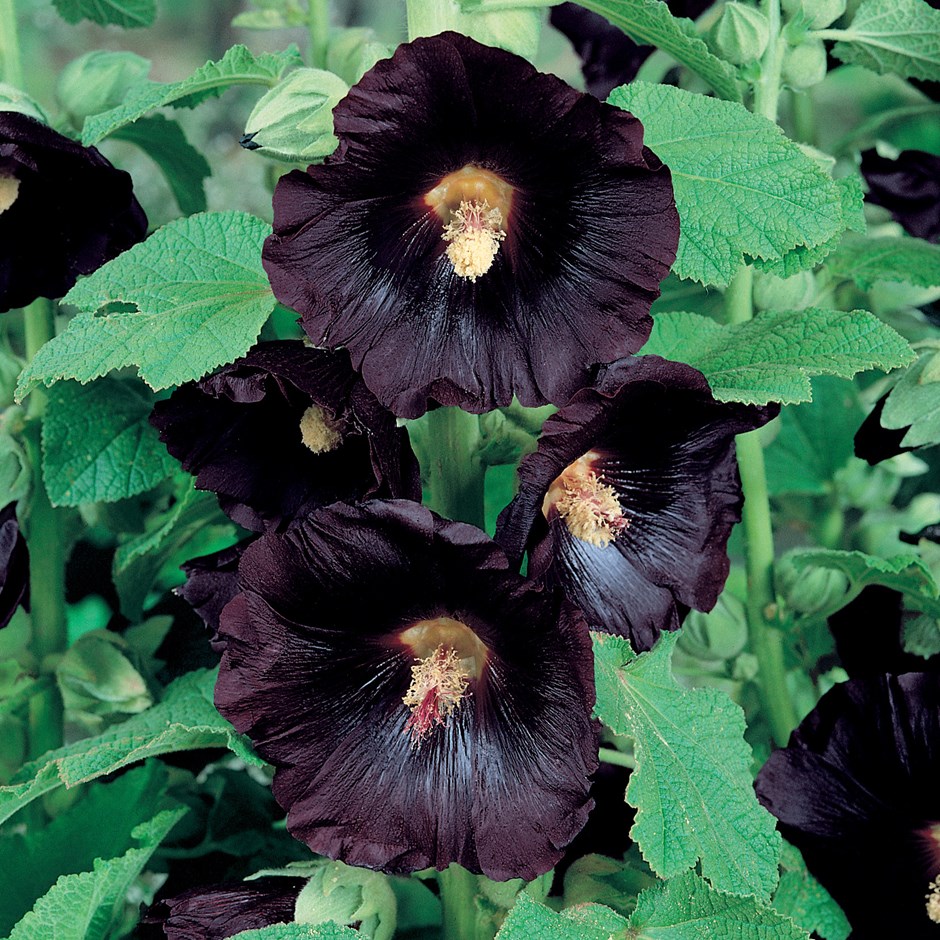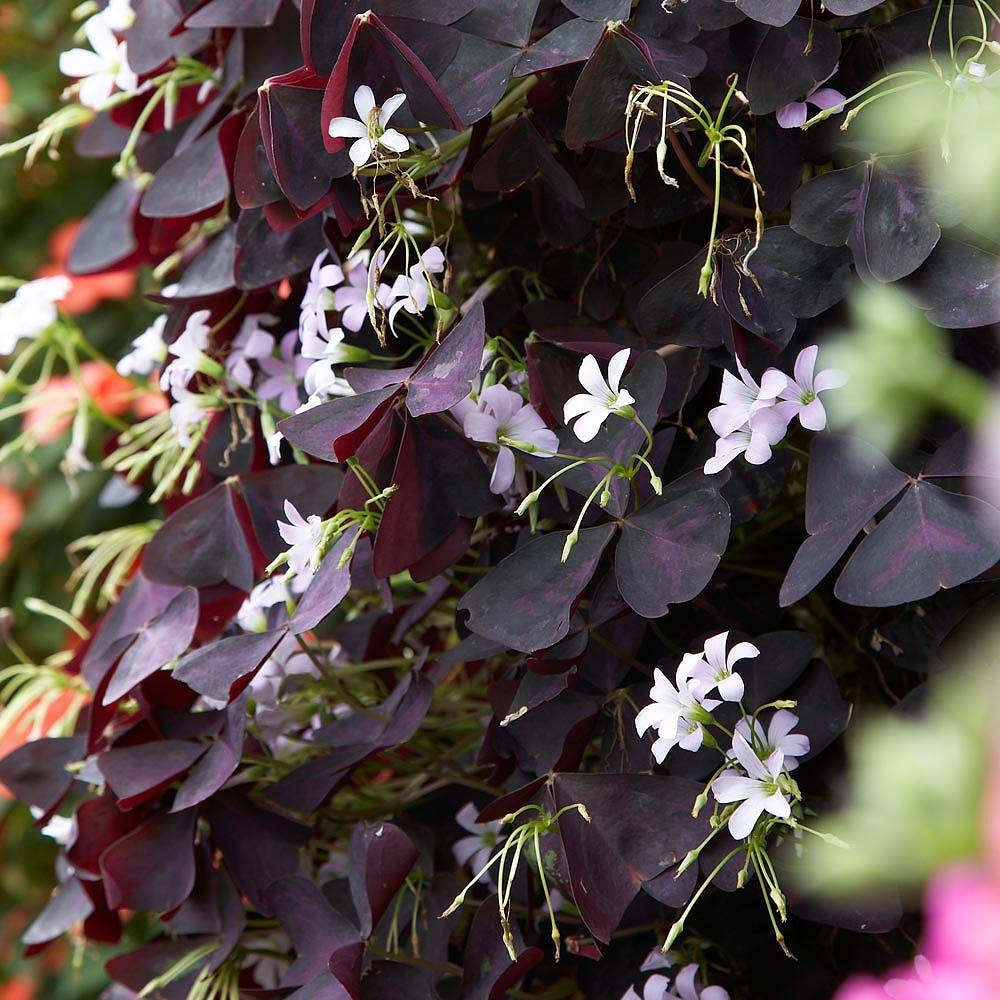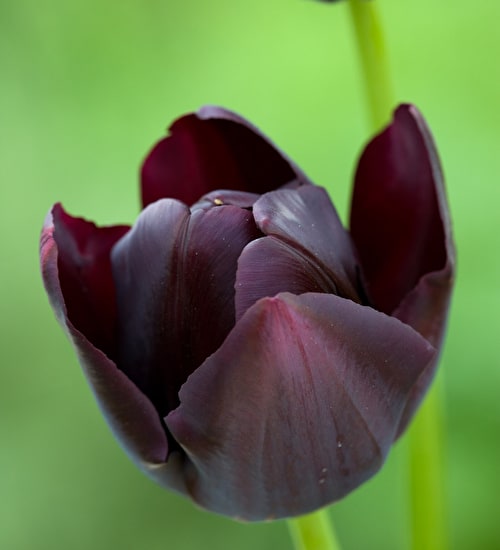Don’t know about you, but we’re dining out on these

Listen to our songs about food
More playlists…
Featured
Blog
Taking Time to Live Well
Don’t know about you, but we’re dining out on these

Listen to our songs about food

Using more positive language can make a big difference to your life, reawakening your confidence and boosting your happiness
Say positive things at every opportunity. Say thank you; give praise, pay compliments.
Focus on your strengths and write three affirmations that begin “I am...” They needn’t be true (yet).
Monitor your speech over a day. Note the patterns you fall into and start rephrasing.
Try some simple switches:
I’m hopeless at... I’m learning to
It’s impossible... It’s a real challenge No problem... You’re welcome
I messed up... I can do better
I’m stressed... I have a lot on
More on using positive language on page 76 of October’s The Simple Things.

Photography: Tony Briscoe
Makes 12
Butter, for greasing
110g caster sugar
2 tbsp cornflour
3 egg yolks
225ml double cream
175ml milk
2 tsp vanilla extract
1 sheet of ready-rolled all-butter puff pastry
Ground cinnamon, for dusting
Icing sugar, for dusting
1 Grease a 12-hole muffin tin (unless using a non-stick tin). In a saucepan, mix together the caster sugar, cornflour and egg yolks. Gradually add the cream and milk, whisking until smoothish. Don’t worry about lumps – they will whisk out.
2 Stir over a medium heat until the mixture becomes very thick and, just before it comes to the boil, stop whisking, remove from heat, stir in vanilla extract and tip into a bowl.
3 Cover with cling film directly on the custard to prevent a skin forming. Leave to cool.
4 Preheat oven to 200C/Fan 180C/Gas 6. Unroll the pastry with the long edge closest to you (landscape format), dust with a little cinnamon and cut in half vertically. Put one piece on top of the other and, starting from the bottom (shortest) edge, tightly roll up the pastry pieces into a sausage shape.
5 Slice into 12 evenly sized discs. Use a rolling pin or your fingers to flatten out the discs into thin circles. Press into a muffin tin and spoon in the cold custard.
6 Bake in the preheated oven for 20–25 mins until the pastry is golden and the custard is puffed up, bubbling and golden in parts. Leave to cool in the tin for 10 mins (they will shrink down as they cool) before removing. Caramelise the tops with a cook’s blowtorch if they’re not as browned as you’d like. Sometimes they are, sometimes they’re not!
7 Serve either warm or at room temperature with a last-minute dusting of icing sugar and ground cinnamon.
Cook’s note: Get ahead by making the custard (in steps 1, 2 and 3) up to three days ahead and keeping in the fridge. You can prepare as far as the end of step 5 any time on the day of baking. The tarts can also be baked several days ahead and eaten warmed through or simply served at room temperature.
Recipe from The Get-Ahead Cook by Jane Lovett (Apicius Publishing)
Cake in the House is our monthly recipe feature - get a cake recipe every month in The Simple Things!

Don’t be afraid of the dark: adding a touch of gothic horror to your garden can be smart, dramatic and not at all spooky
Tall, stately hollyhocks are a staple of the traditional English cottage garden. Subvert their easy charm by choosing the mysteriously dark variety, ‘Nigra’, with its glossy velvety petals. Available from crocus.co.uk.
Sending their silky maroon spathes out from speckled green leaves, these arum lilies add an exotic flavour to patio containers. They also make elegant and long-lasting cut flowers.
From jparkers.co.uk
The purple-leaf false shamrock is ideal in a conservatory or on a sunny windowsill. It’s lovely to look at, its deep-plum leaves folding themselves up at night.
From thompson-morgan.com.





Turn to page 113 of October’s The Simple Things for more black gardens.

Photograph: Jo Emmerson
When she realised that collections of rare literary works are dominated by male authors, AN Devers set about redressing the balance
"They are as close to perfect objects as exist in the world," smiles AN Devers, describing her favourite subject - books. Five years ago, she was working as an arts journalist in New York City when occasionally buying a signed first edition by a favourite writer turned into a more serious habit. Devers started going to rare book fairs and quickly noticed a price discrepancy in modern first editions by men, and those written by women.
“I knew that the rare book world was considered rather old-fashioned, but I hadn’t realised there were so few women book collectors or dealers compared to the number of men who sell and collect," she says.
Not long after, Devers was struck by the idea for The Second Shelf: a rare book business focused on books by and about women. The collector trade is part of a supply chain, she explains, one that leads to readers’ bookshelves, universities, archives and libraries. Historically dominated by white, Western ‘bookmen’, women – particularly women of colour – have simply been deemed less collectable.
“I put it down to the gender bias that plagues nearly all fields,” she says. “Women’s contributions are typically undervalued across all areas of our life and professional experience.”
The only book she has given herself permission to keep “that I could – and should – sell” is a first edition of Sylvia Plath’s The Bell Jar. Written under the pseudonym of Victoria Lucas, it’s a work that Devers calls “tremendous and underrated”.
Earlier this year, Devers also launched a Kickstarter crowdfunding campaign. It was a way to communicate the gender imbalance issue and also to raise funds for her burgeoning business. She used the proceeds – 608 backers pledged £32,000 – to launch an online book shop. And she now also prints a quarterly publication: a magazine and rare book catalogue hybrid for people who share her passion.
AN Devers and some of her favourite books at Second Shelf (thesecondshelf.com).
Turn to page 52 of October’s The Simple Things for more articles written by our friends at Positive News, the magazine for good journalism about good things. See the world from a different angle; positive.news/subscribe.

Illustration: Kavel Rafferty
Having a bad day? It’s not because of that massive delay on your way into work or forgetting that appointment. No, it’s obviously because you got out of the wrong side of the bed this morning. These days, we don’t tend to have a specific side in mind, but in earlier times, the wrong side specifically meant the left. The Latin adjective sinister originally meant ‘left’ but later took on meanings of both evil and unlucky: inn-keepers were said to push beds against walls to prevent their guests being able to get out of anything but the ‘right’ side.
Thankfully modern surveys trump Roman superstition. Over the past decade we’ve not only found that those who get out on the left side each day are likely to have more friends and to enjoy their jobs, but they are also more likely to be in a better mood than those who instead choose the right-hand side.

Domestic disasters, terrible weather, awkward family situations – whatever life throws at you, try reframing it with the question above. Not only does it make you feel more optimistic just by asking it, you’ll find it doesn’t take you long to see the positive side. Jot down some things that are niggling you at the moment and see if you can turn them around.
Eg, our TV is broken = We have more time to talk/read/listen to music.

Project by Roma McLaughlin
You will need:
Cutting mat
1 sheet lightweight A4 black paper, 80–120 gsm
1 sheet lightweight A4 white copy paper, max 80 gsm, for templates
1 sheet mid-weight A4 white craft paper, min 120 gsm, for background
Sticky tape
Craft knife or scalpel, with blades
Metal ruler
Pencil
Eraser
PVA glue
Toothpick or cocktail stick
A4 picture frame
A family photograph
Photocopier or scanner
1 Find a family photograph in which individuals or a group are in silhouette, with their outlines clearly visible (photos taken against a wall or plain background work best) – ideally, individual silhouettes would just join or overlap within a group composition, so they remain recognisable. Photocopy and enlarge the photo if necessary to fit A4 size and then trace the relevant outline onto an A4 sheet of copy paper to make a template.
2 Place the template over your sheet of black paper and attach both to your cutting mat with a piece of sticky tape placed over the corners (take care not to place tape over the image area).
3 Start cutting away the white, negative shapes with a scalpel — begin with the smallest areas, to help prevent your paper from tearing. You’ll be cutting both the template sheet and black paper simultaneously. Anchor the cutting mat with one hand, and work with the blade in your other, holding it vertically, like a pencil, for greater precision. It will help you to keep the blade straight if you move the whole mat around while cutting shapes.
4 Continue to work until all of the white paper is cut away, using a metal ruler with your scalpel for any straight lines.
5 Carefully remove your template and finished papercut from the cutting mat and separate the two.
6 Fixing mistakes is not impossible. If you’ve cut too much or too far, you can mend the area from the back. Simply dot glue onto the papercut surface using a toothpick or cocktail stick, then ‘patch’ the area using a tiny scrap of black paper.
7 Place the finished silhouette centrally onto your A4 white background paper sheet and mark its position lightly with pencil dots (these can be erased later).
8 Turn the silhouette over and, again using PVA glue and a toothpick or cocktail stick, dot glue onto the reverse (you don’t need to cover the surface with glue — this should be enough). Position the silhouette, right side up, in line with your previous pencil marks, and smooth down onto the backing sheet. Leave to dry completely.
9 You can now frame your piece. Use a flat frame and sandwich the silhouette between glass and backing.
Adapted from V&A Paper Crafts: A Maker’s Guide (Thames & Hudson in association with the V&A).

Photography: Kirstie Young
Homemade granola is so much better than shop-bought, especially when it’s a luxurious chocolate and hazelnut one. Once made and cooled, this will keep for several weeks in an airtight container.
Serves 6
100g salted butter
200ml honey
2 tbsp cocoa powder
250g porridge oats
200g hazelnuts, blanched and roughly chopped
200g dark chocolate, roughly chopped
1 Preheat oven to 180C/Fan 160C/Gas 4. Melt the butter in a large pan with the honey and cocoa powder. Tip in the rest of the ingredients and mix well until everything is combined.
2 Tip the mixture onto a large baking tray, spread it out and press down lightly. Bake for 18 mins, then remove from the oven and leave to cool completely. When cool, break into chunks and store in an airtight container. Serve with yogurt and fruit.
Turn to page 38 of August's The Simple Things for more of our staple foods feature on hazelnuts from Lia Leendertz.

My teenage stepson lives with us part time – a set-up I enjoy very much, but with one reservation. He is the master of the ‘floor drop’, ie, the notion of hanging clothes up is totally alien to him, so they lie heaped on the floor mouldering away. I am loathe to tiptoe into his room when he’s out, pick up his jeans and T-shirts and put them away in his wardrobe for him, but I can’t bear to see them lying there. What to do?
Answer in brief: make hanging up clothes cool
The ways of the teenage boy are indeed mysterious. Whereas you take pleasure in rows of neatly hung jeans, to him that idea is beyond consideration. Clothes are to be worn, then discarded until they need washing (preferably by someone else). But it’s good to encourage him to take responsibility. Try propping a vintage wooden ladder by his bedside (or buying a ready-made version, left) to drape his clothes on. It will take less effort than opening a wardrobe and finding a hanger, and may just persuade him to do it.
Turn to page 114 of October's The Simple Things for more on organised wardrobes.

Things you might want to do this month (no pressure!)
Make toffee apples – or our liquorice shards
See how many different coloured leaves you can find
Tell a ghost story
Gather some hedgerow hips and haws for a bouquet
Call a friend for a proper chat instead of texting
Leave town for the day and go for a countryside walk
Think about all the good things you have in your life right now and write a list of some of them
What would you add? Come over and tell us on Facebook or Twitter.

Illustration: Kavel Rafferty
It’s an effective use of all those Ikea tealights, and creates enough heat to keep a room toasty (and energy bills down).
You will need:
4 tealights
Metal loaf tin
Matches or a lighter 2 bricks
Cooling rack
2 terracotta flower pots: one should fit inside the other, with about 2cm of space between the two
Small piece of foil
1 Pop the tealights in the loaf tin and light. Then add a brick on either side of the tin and place the rack on top.
2 Position the smaller of the two pots upside down on the rack, right over the candles.
3 Cover the hole in the bottom of the pot with foil.
4 Then put the larger pot over the first.
5 If and when the candles go out, just slide out the tin to relight or swap in a new tealight.
Note: It heats up quickly and will be too hot to touch after about half an hour, so keep kids and pets away.

There are varying rules for a conker fight, but these are the ones laid out by The Woodland Trust, so you can run your own back garden championships:
Wrap the loose end of the string around your hand. One player should dangle their conker on about 25cm of string, keeping it absolutely still.
The other player then swings their conker at it to try to break it.
If the attacking player misses, they can have two more chances before it’s their opponent’s turn.
Take turns until one of the conkers breaks and you have a winner.
A new conker is called a ‘none-er’ as it hasn’t beaten anyone yet. When it beats another conker, it’s a ‘one-er’. If it beats another, it becomes a ‘two-er’ and so on.
Turn to page 64 of October’s The Simple Things for How to do autumn well, including how to pick a prime pumpkin, Apple Day, and how to go mushrooming (without updating your will).

Photography & styling: Kym Grimshaw
A RECIPE TO CELEBRATE HARVEST (SCHIACCIATA MEANS ‘SQUASHED’)
Serves 12
200g raisins
250ml vin santo or moscatel
850g strong white bread flour
2 scant tsp fast-action yeast
435ml warm water (100-110C)
1 1⁄2 tbsp extra virgin olive oil, plus extra for brushing
450g black seedless grapes, washed and stalks removed
2 tbsp demerara sugar
2 tbsp fennel seeds
you will need
A 33 x 22cm baking tray
1 In a small pan, bring the raisins and vin santo or moscatel to a boil, then turn off the heat and set aside for at least 1 hour, preferably overnight.
2 Mix the flour and yeast with 1 tsp salt. In a jug, combine the warm water with the olive oil. Pour into the flour mixture and combine, then knead until smooth and elastic. Or use a mixer with dough hook attachment.
3 Brush a thin layer of oil over the inside of a large bowl and put the dough inside, turning it over in the oil. Cover with cling film or a plastic bag and leave in a warm place to rise until doubled in size (about 1 hour 30 mins).
4 Brush a 33 x 22cm baking tray with oil. Divide the dough into two and roll half out to the size of the tray, pushing it into the corners. Drain the raisin mixture and spoon over the dough. Roll out the second half of dough to the same size and sandwich over the first. Pinch the edges to join. Leave in a warm place, covered with a clean tea towel, until risen (at least 30 mins).
5 Preheat oven to 190C/Fan 170C/ Gas 5. When the dough has risen, scatter over the grapes, then sprinkle over the sugar and fennel seeds.
6 Bake in the preheated oven for 45 mins, until you have a golden crust and the grapes are bubbling and releasing their juices. Cool on a wire rack for 15 mins, then cut into generous slices to serve, with coffee or as a dessert in its own right.
Turn to page 24 of October’s The Simple Things for more of our autumn fruit feast, including Blistered grapes, ricotta & toasted sourdough, Parma-wrapped chicken with figs & gorgonzola, Herb-roasted veg Kale & fennel salad, and Poached prunes with Pedro Ximénez.

A feast of autumn fruit was inspired by the annual harvest days at Dunleavy Vineyards in the Chew Valley, Somerset, when friends and family join together to help harvest grapes and share a meal in the vineyard afterwards.
Launched in 2008 by Ingrid Bates, the vineyard produces multi-award winning rosé wine from Pinot noir and Seyval blanc grapes. Dunleavy Vineyards’ first sparkling wine will be available from October 2018.

When all around is setting seed and shutting up shop for the dark months ahead, it’s tempting to follow nature’s lead and hunker down too. But look at what else this month offers – spectacular colours to inspire redecorating, fun in the form of spooky stories, and a harvest rich in fruit, nuts and vibrant squashes. Time to spend a busy afternoon in a steamed-up kitchen as the light fades. Self-care in autumn means nourishing your mind and body by looking out rather than in. And possibly buying a pair of new boots...
Get hold of your copy of this month's The Simple Things - buy, download or subscribe.
View the sampler here, buy back issues or try our sister mag, Oh Comely

Frances Ambler shares her top five newsletters from our September issue feature on the new breed of newsletters: writing that moves, informs and inspires, that you definitely won’t want to leave unread
Domestic Sluttery, domesticsluttery.com
I used to write for Domestic Sluttery when it was a website. Now it’s in a newsletter format, I can’t wait to see what treats they have discovered each day. From inspiring women to the best bargain on the high street, it really does live up to its promise to make your inbox more fabulous.
Thread, bit.ly/jhethread
I’ve started reading more newsletters to read the personal stories and reflection that I used to find in blogs. It’s hard to pick a favourite tinyletter but I’m always pleased when Jean Hannah Edelstein’s Thread arrives. She relates stories from her life so beautifully – it’s always a refreshing pause for thought in my inbox (and her current book, This Really Isn’t About You, is fantastic too).
Laura Olin, lauraolin.com/newsletter
I don’t know how Laura does it, but her weekly newsletter always links to fascinating things on the internet that I just don’t come across elsewhere – things that make you smile, things that make you think. On days when the internet seems to just be people yelling at each other, it’s a reminder how it can be an inspiring, positive space as well.
Black Cardigan Edit, blackcardiganedit.com
“Advices and enthusiasm related to writing, books and creativity”. I don’t think the author of Black Cardigan Edit, Carrie Frye, has featured a book without me immediately clicking ‘buy’ – it’s almost as if her recommendations are specifically tailored for me. It’s a good job it’s infrequent, as otherwise I’d be broke.
Quartz Obsession, qz.com/newsletters/quartz-obsession
A daily dive into something you’ll likely have overlooked, packed with facts and stats. Thanks to Obsession, I’ve learned about vanilla, venus flytraps, sheds, lettuce and the colour purple. It’s the most pleasurably geeky moment of my day.
Turn to page 44 of September's The Simple Things for more newsletters worth reading.

The mophead blooms of the hydrangea look as good in a vase as in the border.
“They may not be the cheapest cut flowers,” says Ellie Marlow, florist at Catkin & Pussywillow, “but they work well either as statement arrangements or single stems in bud vases. As their name suggests, they are thirsty blooms and like a lot of hydration. Should they droop, dip the stem into boiling water for a minute. That will revive them.”
Photography and flowers: Ellie Marlow, Catkin & Pussywillow, Winchester railway station (catkinandpussywillow.com)

Some former routes have been restored for use as heritage lines, offering passengers the chance to enjoy the full sensory experience of steam: the smoky scent in the air, the magical chuff-chuff of acceleration and the occasional tuneful whistle.
They include:
Climb aboard splendid steam trains with romantic names such as the Sussex Belle and Golden Arrow running between East Grinstead and Sheffield Park in East Sussex; bluebell-railway.com.
Admire the North York Moors National Park from the steam trains on this not-for-profit, volunteer-led railway, which is fast approaching its 200th birthday – don’t miss Goathland, famous for playing fictitious stations including Harry Potter’s Hogsmeade, as well as a turn in 1990s TV show Heartbeat; nymr.co.uk.
Indulge in afternoon tea and first-class travel as you steam between Porthmadog and Caernarfon along the world’s oldest narrow gauge railway – the carriages’ windows framing magnificent mountainous views as it passes through Snowdonia; festrail.co.uk.
Turn to page 62 of September's The Simple Things for Ruth Chandler on her love of old railway tracks, or read on for some of her favourite routes.

Photography: Kirstie Young
When you have a glut of sweet peppers, one of the most delicious things to do with them is to roast them and preserve them in vinegar and oil. Long slow cooking brings out their sweetness, and they make a brilliant addition to mezze and an excellent pizza topping.
Makes 1 jar
8 peppers
White wine vinegar
Extra virgin olive oil
YOU WILL NEED
450ml Kilner jar or equivalent, sterilised
1 Preheat the grill. Put the whole peppers on a baking tray and grill, turning, until blackened all over.
2 Tip the peppers into a large bowl, cover tightly with cling film and leave to cool completely: the cling film traps the steam and helps to separate the skins from the flesh.
3 Once cool, peel away the blackened skins and discard, then open up the peppers to remove the seeds and stems. Tear the flesh into wide strips and drop it into a bowl, along with as much of the juices as you can capture, then tip everything into a sterilised jar.
4 Pour enough vinegar over the peppers to cover, and use a knife to agitate them a little and get rid of any air bubbles, then top with a small slick of olive oil. Seal the jar and transfer to the fridge. Eat within a month.
Turn to page 38 of August's The Simple Things for more of our staple foods feature on peppers from Lia Leendertz.

Be afraid. Be very afraid.
We celebrate slowing down, enjoying what you have, making the most of where you live, enjoying the company of of friends and family, and feeding them well. We like to grow some of our own vegetables, visit local markets, rummage for vintage finds, and decorate our home with the plunder. We love being outdoors and enjoy the satisfaction that comes with a job well done.